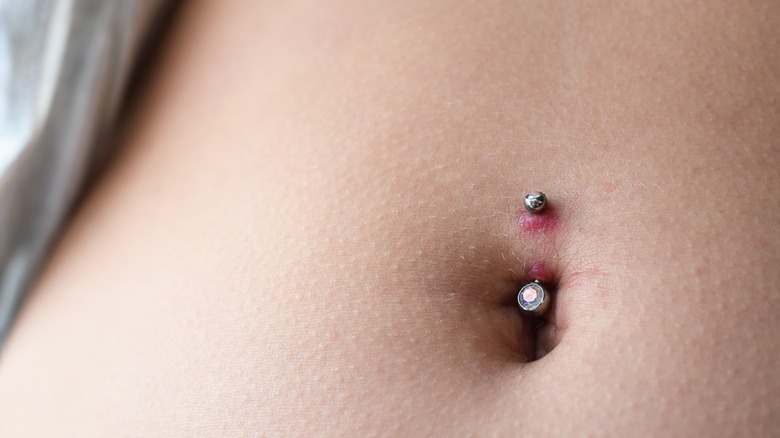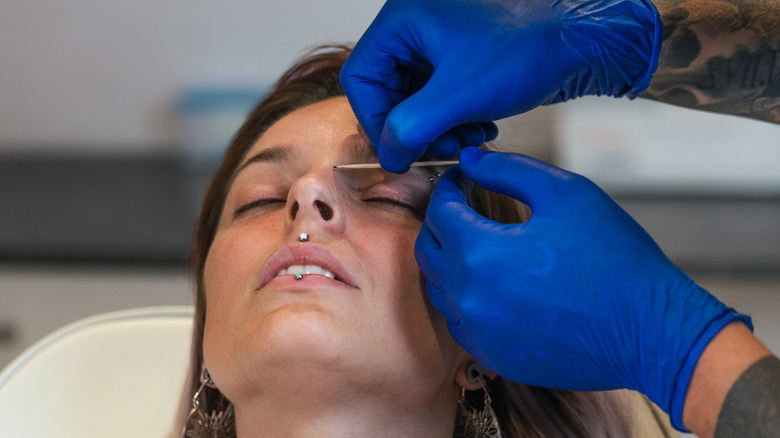Signs That Your Body Is Rejecting Your New Piercing
Immediately following a new piercing, the skin around it may appear red or swollen as your body goes to work healing itself (via Pierced). However, in the days, weeks, or sometimes decades after having received a new piercing, these can also be two potential signs of piercing rejection, reports Healthline. Here are some reasons as to why our bodies may reject our new piercing and signs to be on the lookout for.
Piercing rejection refers to the body's process of expelling your new jewelry from the skin (per Healthline). As a protective mechanism, piercing rejection occurs because the body has labeled the object as a potential health risk, reports Byrdie. Just like our body works to keep us free of bacteria, allergens, and other contaminants, the same can be true for body piercings (via Healthline). Jewelry material, size of the piercing, changes in weight, stress, illness, and genetics are all factors that can potentially play a role in one's likelihood of piercing rejection, as well as the physical location of the piercing. "Some anatomical sites are more prone to rejection—flat, tight surfaces don't allow for deeper piercings and are subject to greater pressure," board-certified dermatologist Dr. Jessie Cheung tells Byrdie. This often includes the belly button, eyebrows, sternum, nape of the neck, and more.
How to reduce the risk of scarring from piercing rejection
Signs that you're experiencing piercing rejection include the jewelry having shifted from its original piercing site, the piercing holes having grown larger, the jewelry hanging or drooping differently, as well as being able to see the jewelry through the skin's surface (via Healthline). You may also notice the skin surrounding the piercing holes has become red, inflamed, flaky, hardened, or has begun to peel. Experts at Pierced add that skin that has become taut or thin around the jewelry can also be an indicator of piercing rejection.
Should the body push the piercing out through the skin entirely, you may incur scarring over the area where the skin has split open, reports Healthline. To keep the risk of scarring from piercing rejection at bay, experts suggest changing to a larger-sized piece of jewelry, or one of a different shape or material. Alternatively, you can try swapping in a plastic ring or rod that may be less irritating to the skin.
Lastly, be sure to remove the jewelry if you see it near the skin's surface. Once it breaks through the skin's surface, you'll want to wait one year before attempting to re-pierce the area, which can be more difficult due to scarring (via Healthline). "You can attempt to re-pierce in the same area, but make sure your artist either goes deeper, uses a larger gauge, or chooses a less reactive metal," Dr. Jessie Cheung concludes telling Byrdie.


